Messageries Maritimes and Chargeurs Reunis
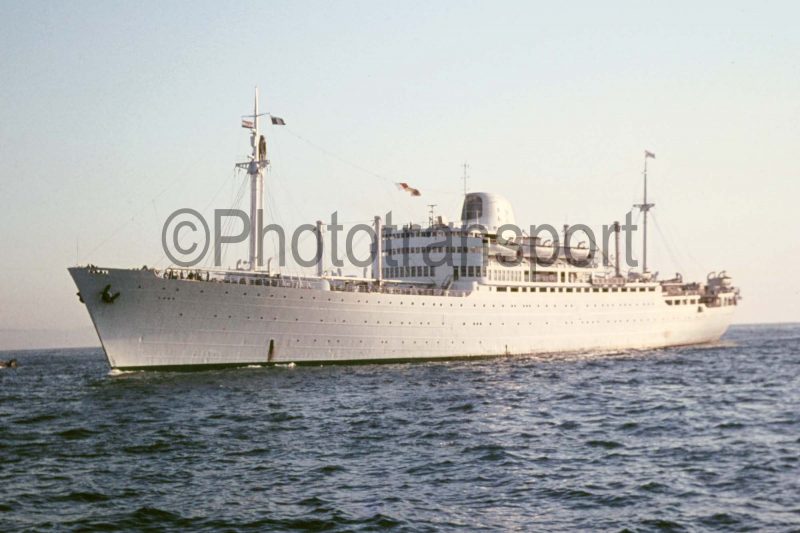
French Indo China, part of which was the captivating country of Vietnam of today with an area of 128,402 square miles, was first discovered by the Portuguese in 1545, followed by the Dutch and then the French. The local Nguyen Anh dynasty took the Catholic religion from French missionaries, but felt no gratitude to the grasping French authorities and instigated anti-French measures. The Vietnamese have fought for centuries to assert their national identity, and a savage cycle of rebellion and repression was established. French troops occupied Danang in 1858/59, seized Saigon in 1860, and in 1865 forced the Nguyen Anh heirarchy and leaders to form Cochinchina, the southern half of Viet Nam, as a French colony. By 1883, France occupied the whole length of the country, with a coastline of over one thousand miles covering fourteen degrees of latitude, from Annam in the north to Tonkin in the centre and Saigon in the south, with the imperialist faction in France having sent yet more troops to the Bay of Haiphong in 1884. The Nguyen Anh dynasty leaders were reduced to French puppets, with France then occupying Cambodia and Laos, and in 1887 they created the colony of Indo China to include Laos and Cambodia with a capital at Hanoi in the north.
Paul Doumer, the French Governor of Indo China from 1897 to 1902, imposed heavy taxation on the population, state monopolies on salt, alcohol and opium, with enforced labour to work the coffee and rubber plantations and the extensive mineral mines. Forty years later, the rise of Nazi Germany and the occupation of France led to the puppet Vichy French regime controlling Indo China and collaborating with Japan, the Axis partner of Germany, in a brutal and savage campaign of terror against the local population. Ho Chi Minh (1892-1969), the architect of Vietnamese independence, was educated in France and began resistance by organising a nationalist movement against the French and the Japanese. In March 1945, faced with imminent defeat, Japan took over direct administration from the Vichy French regime. However, Ho Chi Minh and his Viet Minh forces had already liberated parts of the far north and after the surrender of the Japanese on 15th August 1945 he declared national independence on 2nd September 1945 in Ba Dinh Square in Hanoi.
General Charles de Gaulle was determined in 1946 to regain control of Indo China and he sent battalions of troops on Messageries Maritimes liners. The First Indo China War saw much fighting by Viet Minh forces from their strongpoints in the Viet Bac region, eventually taking over much of the countryside, with the French only holding Hanoi, Saigon, Danang and most large towns. Dien Bien Phu is situated in a fertile valley in the centre of the country and was the scene of the decisive battle in May 1954. The French infiltrated the area but Viet Minh troops systematically broke down the French position. General de Castries, the French commander, and his troops were surrounded, captured and imprisoned. The terms for a ceasefire were agreed in Geneva, with two military zones established, the French to the south of latitude 17 degrees North, and the Viet Minh to the north of that line.
The United States of America were funding as much as 80% of the French war effort in an attempt to stem the flood of Communism from the north, and they were committed to saving the South Vietnamese regime in 1961 and started bombing the north. North Viet Nam actively assisted the insurgent movement in South Viet Nam from 1959. The Americans then began their own protracted Viet Nam War during 1968/75. They suffered defeat by the clever use of warfare using deep concealed trenches for the Viet Cong guerrillas to advance from their strongpoints, and the last American troops sailed from the Saigon river on 29th April 1975. There is a river connection from Saigon, renamed Ho Chi Minh City in 1975, to the mighty Mekong river to the west. At Saigon, the famous Chinese style ‘House of Dragons’ company agency building was built behind the three Messageries Maritimes river berths, with a constant procession of small craft passing up and down the Saigon river.
Messageries Maritimes Services
The French Indo China service by Messageries Maritimes began on 19th October 1862, as part of a mail contract signed a year earlier to service the French overseas possessions in the Far East, with later extensions to Hong Kong, Shanghai and Yokohama. The steamer Neva of 1,085 grt took the Marseille to Alexandria leg, while Imperaterice of 2,188 grt with accommodation for 87 passengers in three classes and up to one thousand troops in dormitories in the holds, took the Suez onward connection. The construction of the Suez Canal had already begun, and this system with land connection in Egypt was seen as a short term measure. A repair yard was established at Suez to service the Eastern steamers, and was used by two near sisters of Imperaterice that followed on the route in Cambodge of 2,205 grt and Donnai of 2,535 grt.

The momentous opening of the Suez Canal by French engineers saw an official French opening on 18th November 1869 by the French Royal yacht, and the tedious overland trek in Egypt had finally ended. The twin funnelled Amazone of 3,350 grt was the first of a class of five steamers with a service speed of fourteen knots and made her maiden voyage to Indo China in October 1869. Branch services were established from Saigon to Manila, and from Saigon to Sphinx was built in 1915 Haiphong and Hong Kong, and from Shanghai to Yokohama. Dupleix of 1,620 grt took the first branch sailing from Shanghai on 3rd September 1865 and arrived at Yokohama nine days later. The first ever mail from Yokohama arrived at Marseille on 2nd November 1865 after transhipment from Suez to Alexandria on Said of 1,744 grt. The clipper stemmed mail steamer Hooghly of 2,788 grt sailed from Marseille on 17th April 1870 on the first Far Eastern sailing through the Suez Canal to Yokohama, and three months later a regular twice monthly sailing to Indo China was established.
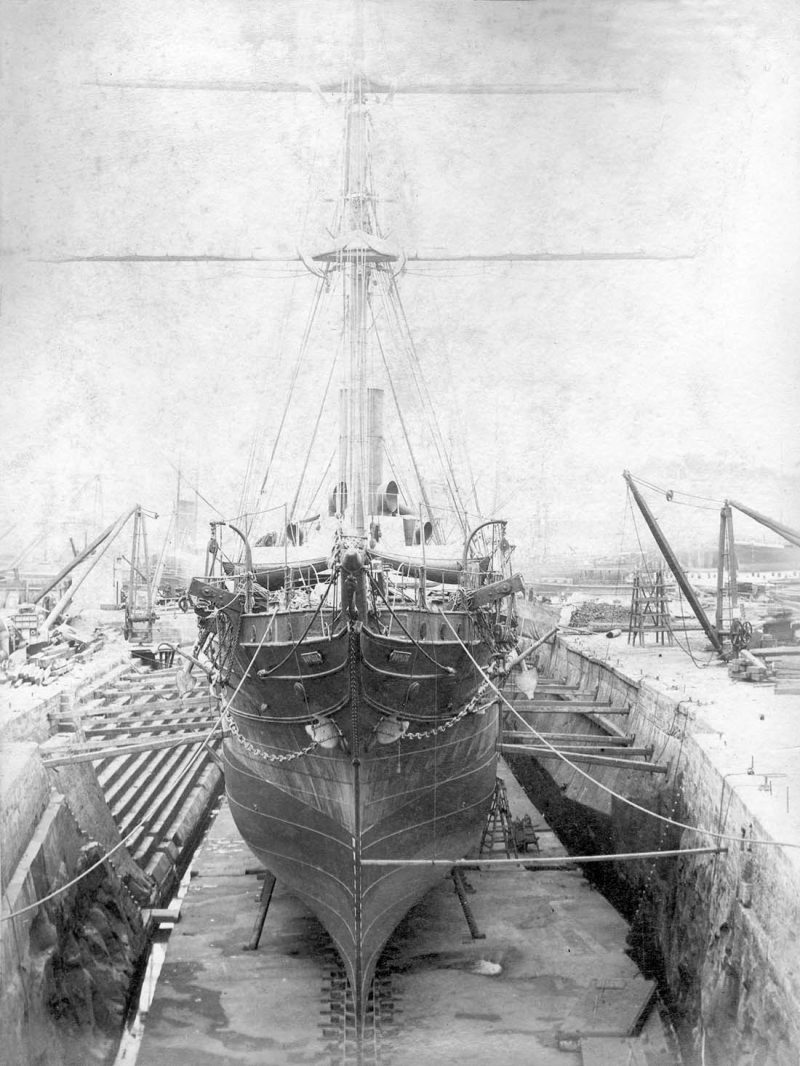
The steamer Arethuse of 1,109 grt inaugurated the branch service from Saigon to Manila in 1886, and also the branch service from Saigon to Haiphong and Hong Kong seven years later. The line from Marseille to Shanghai was inaugurated on 29th April 1896 by the steamer Dordogne of 3,733 grt with accommodation for 31 First Class passengers and six hundred emigrants. A second line sailed from the North European ports of Dunkirk, Le Havre and Bordeaux to Shanghai, with both services monthly. A twin funnelled white hulled class of four passenger and cargo-liners entered service in 1897/98 to Saigon, Haiphong, Hong Kong, Shanghai and Yokohama in 1896 as Laos, Indus, Tonkin and Annam of 6,350 grt with accommodation for 220 passengers in two classes and dormitory bunked accommodation for 818 troops. Annam and Laos were soon transferred to other services, and Annam (2) and Laos (2) of 6,397 grt were purchased in 1903 for the Far East service with much less passenger accommodation of only thirty First Class cabins, followed a year later by the new Kouang Si and Yunnan of 6,472 grt with accommodation for 96 passengers in two classes.
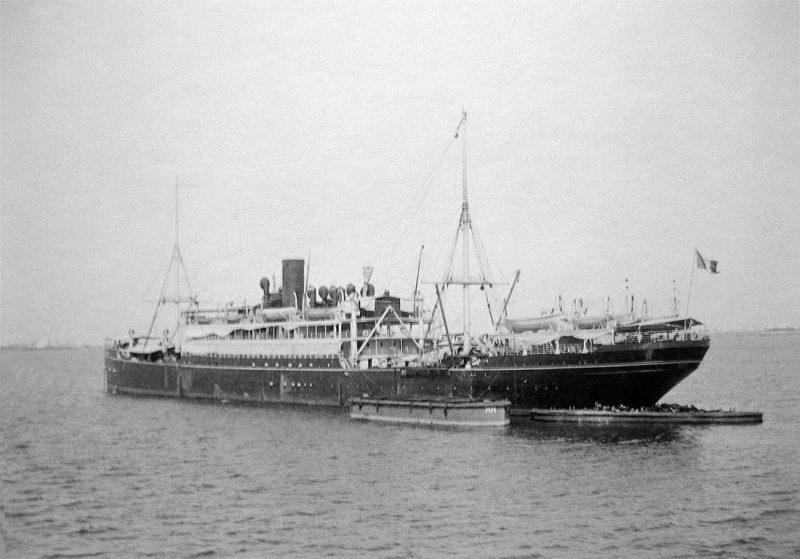
The liner Sontay of 7,236 grt was launched at La Ciotat on 1st December 1907 and had a forty bed isolation hospital and a further dozen isolation berths built into her superstructure during fitting out, as she was primarily a troopship for 718 troops but also carried 240 passengers in two classes. A class of five twin funnelled passenger and troopships of 13,000 grt entered service from the La Ciotat yard during 1912/15 as Paul Lecat, Andre Lebon, Sphinx, Porthos and Athos on the Indo China route. They had accommodation for five hundred passengers in three classes, but could be quickly converted into troopships for 1,800 troops. They served as troopships and hospital ships during World War I, but only Athos became a war loss on 11th February 1917 when torpedoed and sunk by U65 one hundred miles south west of Malta while on a voyage from Port Said to Marseille, despite being escorted by two destroyers, 754 troops and crew were lost and 1,850 were saved.
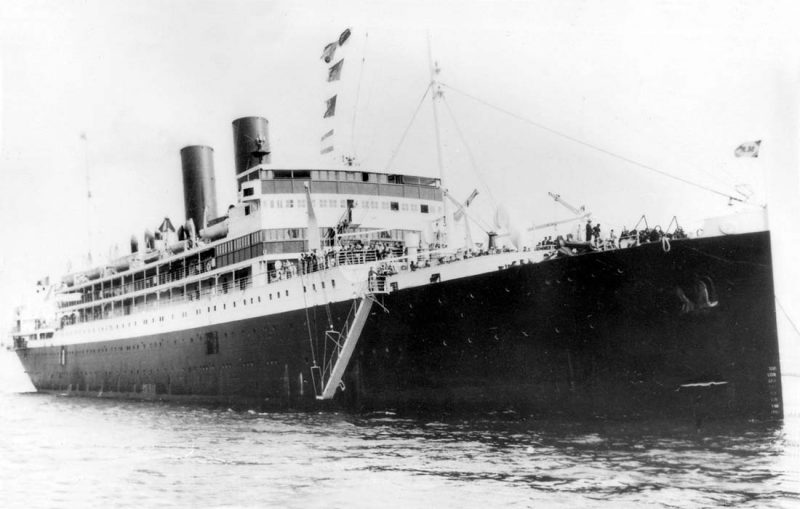
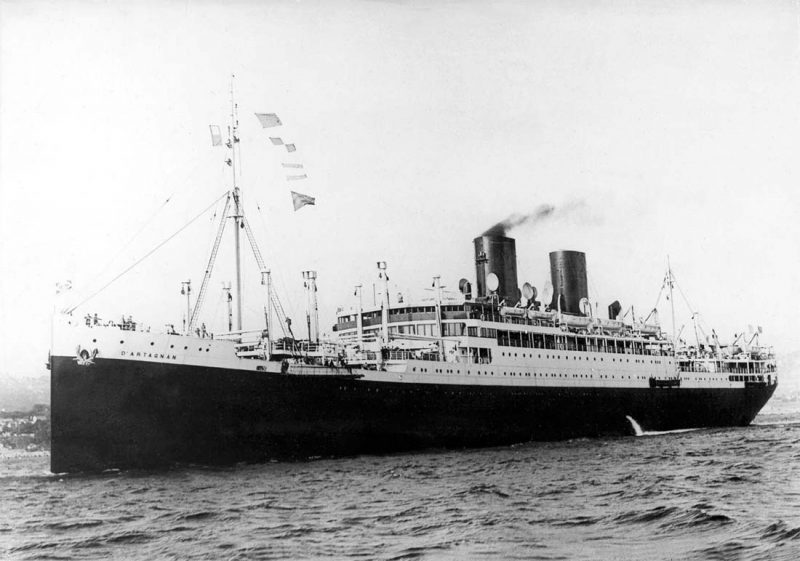
Messageries Maritimes lost 23 ships to enemy action in World War I out of a large fleet of 58 ships in August 1914. War replacement ships brought fleet strength up to forty steamers in 1920, with new passenger and cargo-liners completed for the Saigon service during the inter-war years. These were larger liners such as the sisters D’Artagnan and Athos II completed during 1925/27 of 15,275 grt with accommodation for 320 passengers in three classes as well as five hundred troops with a crew of 219. A trio of twin funnelled ‘nautonphates’ was completed for the Far East services during 1932/34 in Felix Roussel, Georges Philippar and Aramis of 17,000 grt with accommodation for 400 passengers in three classes and a crew of 258. Georges Philippar had a very short career as she was destroyed by fire on her maiden voyage off Cape Guardafui in Somaliland on 16th May 1932. The fire was caused by an electrical fault in a First Class cabin on ‘D’ deck and spread rapidly with flames visible from 35 miles away. Survivors were pulled out of portholes and into lifeboats from the water, and the low final death total of 54 lives lost was due to most passengers and crew being rescued by a flotilla of ships including the Russian tanker Sovetskaia Neft. They were transferred to the outbound Andre Lebon and taken into Djibouti, and then transferred to the company liner General Voyron en route from Madagascar to Marseille.
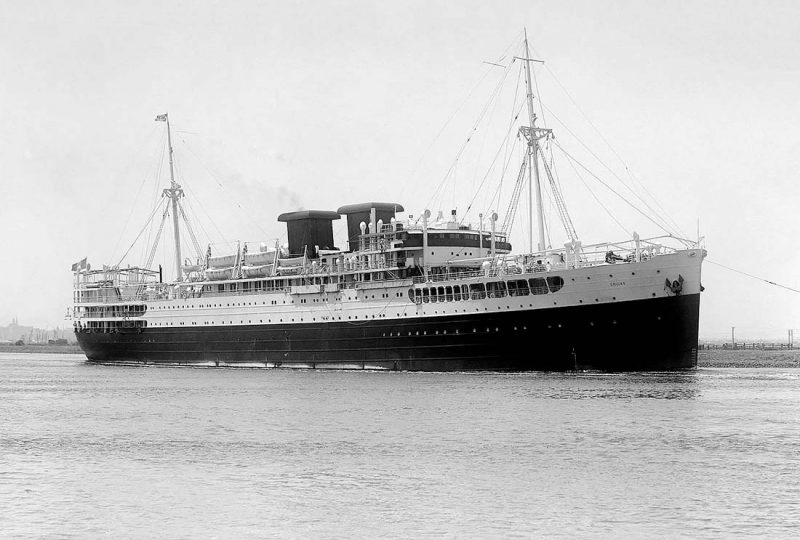
President Doumer of 11,898 grt was a smaller version of the ‘nautonphates’ liners, but in her case she was given a single motorship funnel, and she sailed on her maiden voyage from Marseille to the Far East on 6th June 1935. In a similar misfortune to Georges Philippar, she got no further than Aden, developing serious engine trouble that necessitated a return to Marseille for repairs. She finally reached French Indo China at the end of November 1935, and on her return to Marseille in early 1936 her maiden voyage had lasted over seven months. The passenger services to Saigon were only maintained with great difficulty during the Depression, fortunately a French law had been passed in 1928 whereby Messageries Maritimes share ownership had to be maintained at a level of at least 75% as State owned. The maintenance of troop movements to the important French colony in the Far East was very much in the State interest. The feeder service from Saigon north to Haiphong was maintained from 1925 to 1939 by the twin funnelled former Greek liner Patris of 4,400 grt built in 1909 on the Tyne for the National Steam Navigation Company of Greece, and purchased by Messageries Maritimes in 1925 and renamed Claude Chappe.
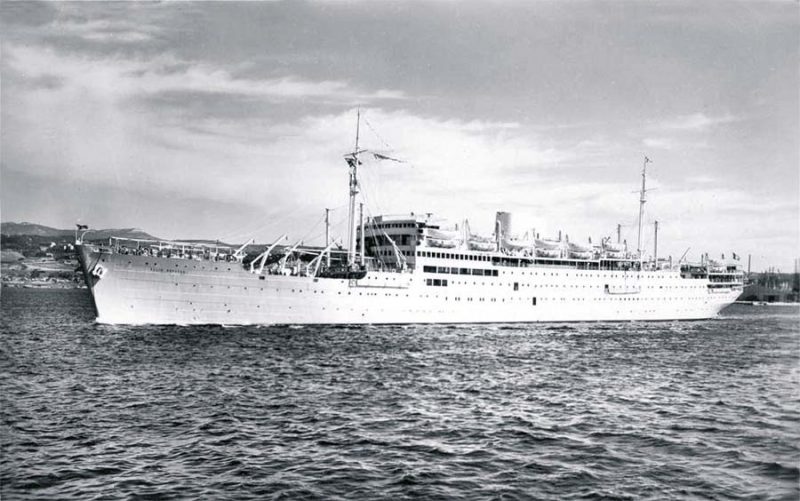
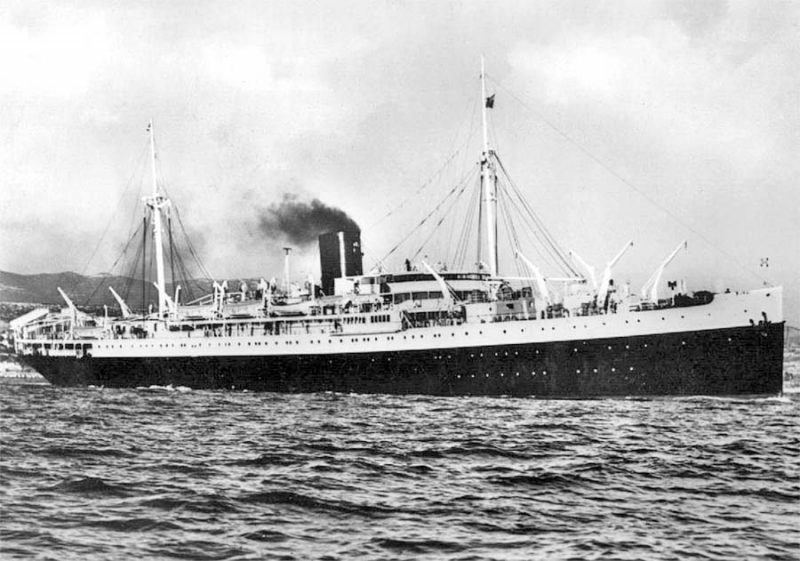
The company fleet was decimated in World War II with twenty ships lost out of a fleet of forty ships on 1st September 1939. Many were taken over by the Japanese at their terminus on the Far East route. The liner Leconte de Lisle of 9,877 grt was one example when transferred from her Madagascar route in 1939 to the Far East route. She was seized by the Japanese in Indo China on 10th April 1942 and used as a troop transport between Japan and Korea for over three years until sunk by a mine in July 1945 off the Maizuru naval base. She was salvaged by the Japanese after the war and returned to company service in December 1950, serving on both the Indian Ocean and Far East routes until scrapped at La Spezia in late 1956. The passenger liner Lamartine of 5,153 grt was another example, based at Saigon from 1939 and renamed Khai Dinh, but was bombed and sunk by American aeroplanes in Halong Bay on 25th November 1942 with the loss of seven crew members.
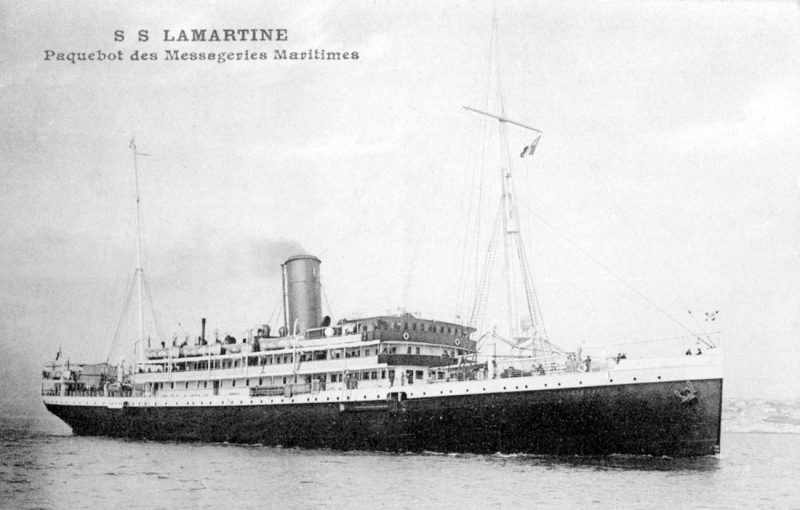
La Marseillaise
The iconic post-war Messageries Maritimes flagship not only was given the name of the French national anthem, but is remembered also for her long construction period of ten years and her fast speed of 24 knots on trials in July 1949. She was designed by the company naval architect, Monsieur Falcoz, as a fast liner with accommodation for 420 passengers in two classes ‘midships, together with emigrant accommodation forward for 318 passengers, with a crew of 246. She was of 17,408 grt on dimensions of length 562.2 feet, moulded beam of 75.5 feet and loaded draft of 27.0 feet. She had her construction halted at the La Ciotat yard during the war years, and was launched in a very incomplete state in 1944 and scuttled later in the year by the retreating Germans. She was raised in 1947 and emerged two years later as a good looking white hulled, white funnelled liner with three Sulzer diesels of 31,500 bhp, each powering a propeller, and giving this ‘flyer’ of a liner speeds of 23 to 24 knots on her trials. Four electric cranes and a number of five and ten tonne derricks on two masts loaded her cargoes into five holds.
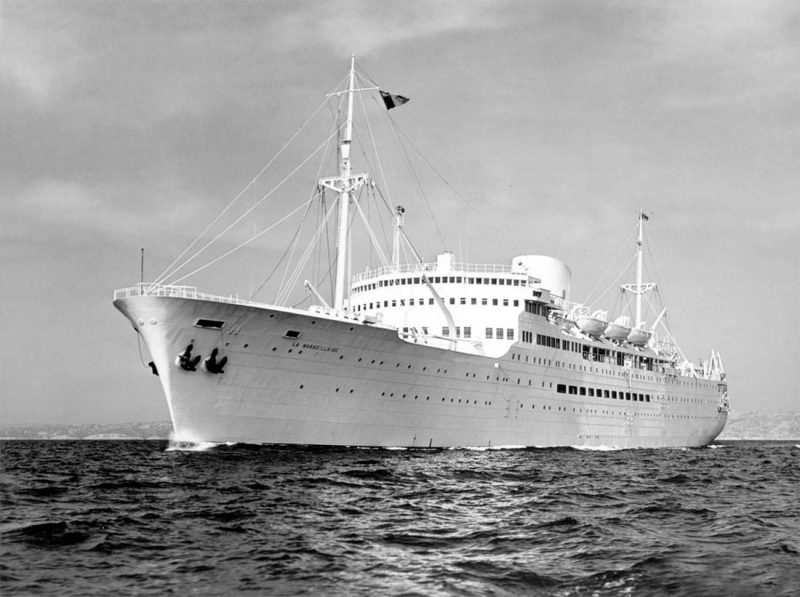
She made two shakedown cruises in the Mediterranean in July 1949 and then sailed on her maiden voyage to the Far East on 18th August 1949. She repatriated in 1951 the bodies of deceased troops of the French Battalion that had fought bravely in Korea. She had six passenger decks, working downwards named as Boat Deck, Promenade Deck, Upper Deck, Main Deck, Lower Deck and Orlop Deck. Deck officers and engineers had cabins on the Boat Deck, with passengers enjoying games and exercise on her open deck. The First Class public rooms were on Promenade Deck, comprising Reading Room, Smoking Room, Main Lounge, Card Room and Drawing Room, with the Second Class Smoke Room at the aft end and a swimming pool. Upper Deck had the mooring and anchor gear forward, with Third Class passengers forward, and then First Class cabins for the full length from the bridge aft to children’s playroom. Main Deck had Third Class cabins forward with remarkably a swimming pool on the starboard side aft of the fo’c’stle, then moving aft the hospital and dispensary, and ten First Class Suites opening out on a private verandah ‘midships on each side of the ship. Lower Deck had some First Class cabins and the Second Class cabins with their Lounge on the port side. The handsome First Class Dining Room was located down below on the Orlop Deck, its dome extending through the deck above, with pantries and galleys aft of this beautiful room. The only drawback was the heat suffered transitting through the Tropics made this unusually low position for a Dining Room unbearably hot.
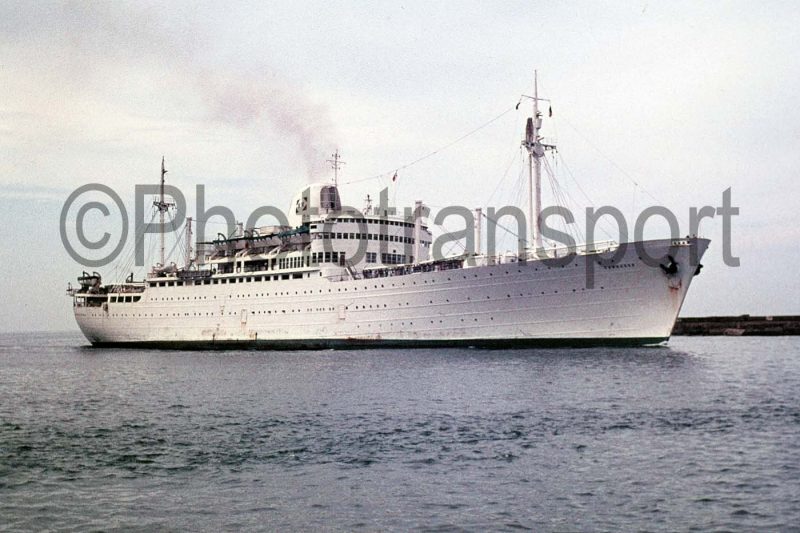
The flagship La Marseillaise continued on her Far East route to Saigon, Haiphong, Hong Kong and Yokohama for only six years and three months before making a pilgrim voyage from Marseille to Tobruk to visit Bir Hakeim, sailing on 28th October 1955. She was then placed on the Mediterranean route from Marseille to Piraeus, Beirut and Alexandria from 24th March 1956 until requisitioned as a hospital ship for the Suez crisis in September 1956, using helicopters to bring in the wounded and maimed. She had three very large Red Crosses painted on her white hull and one on the funnel, and on her return to her owners she was sold to Arosa Line in 1957 and renamed Arosa Sky.

Messageries Maritimes Finale In The Far East
Many tens of thousands of French troops sailed out of Marseille past the nearby offshore island of Chateau d’If bound for Saigon in post–war years. The liner Eridan trooped to Indo China throughout 1945 until she returned to Marseille in 1946 with damaged machinery from a fire at Saigon on 29th December 1945. Ville de Strasbourg re-established the cargo service when she made the first post-war sailing from Marseille on 10th September 1945 arriving at Saigon on 19th October. She had accommodation for forty passengers and had originally been built in 1920 at Londonderry for Compagnie Havraise Peinsulaire. New cargo-liners followed such as Monkay (ex Empire Rawlinson) and Bir Hakeim (ex Empire Gala) as well as six war standard ‘Park’ types of 4,700 dwt used for coastal services. The branch network from Indo China to Taiwan, Malaysia, Thailand, Hong Kong, Indonesia, Philippines, Japan and Korea was fully operational by 1954. The twin funnelled ‘nautonphate’ Marechal Joffre made the last call at Shanghai on 9th October 1949, as the communists had established the People’s Republic of China under Mao Tse Tung at this time and foreign companies were forced to leave.
The war survivor passenger liners Leconte de Lisle, Felix Roussel and others were joined in 1952 by a purchased old American liner dating from 1924, formerly George Washington of the Old Dominion Line, renamed Gascoigne with accommodation for 750 passengers in two classes. A trio of new white funnelled, white hulled ‘MC’ type liners came into service in 1953/54 from the La Ciotat and Dunkirk yards as Viet Nam, Laos and Cambodge. They were of 13,160 grt on dimensions of length 507.0 feet, moulded beam of 72.3 feet and depth of 39.8 feet, with accommodation for 530 passengers in three classes and a crew of 191. They were powerful twin screw vessels fitted with two sets of Parsons steam turbines to give a fast service speed of 24.5 knots. They had six holds served by sixteen derricks and two heavy lift derricks of 30 and 50 tonnes on two masts and two sets of posts.
The flagship La Marseillaise nearly always shared a river berth with one of the three ‘MC’ types at Saigon when she was in port. Viet Nam had sailed from Marseille on her maiden voyage under the command of Commandant Juteau on 17th July 1953 for Saigon and Yokohama, followed by Cambodge two weeks later under Commandant Bergeret, and by Laos a year later on 28th July 1954 under Commandant Barthelemy.
Cambodge sailed on a troublesome voyage from Marseille on 22nd September 1954 for Saigon as she was disabled by a switchboard malfunction for forty minutes shortly after leaving port. Two days later, during a lifeboat exercise, the brake on one of the davits failed. A fire broke out near Suez in the main switchboard disabling her again, and she was forced to return to Suez to await spare parts flown out from France for repairs. In addition, she suffered continual boiler trouble throughout the long voyage.
However, the decisive battle of Dien Bien Phu had already taken place two months before the maiden voyage of Laos, and after the repatriation of all French troops serving in Indo China, Laos was sent to Korea on 15th July 1955 to repatriate the Belgian United Nations contingent of troops. Viet Nam arrived at Marseille on 10th September 1957 with King Sihanouk and the Queen of Cambodia on a State visit to France. The last calls at Saigon by Messageries Maritimes ships ended in 1958, just short of one hundred years after they started.
The ‘MC’ trio continued in service to Yokohama until 17th November 1969 when Laos sailed for the last time from Yokohama for France after 104 years of sailings to the Japanese port since 1865. The steamer Dupleix of 1,620 grt had opened the Shanghai to Yokohama service on 12th September 1865. The liner Viet Nam was transferred to the Messageries Maritimes Pacific routes and renamed Pacifique, while Cambodge was sold to Sun Line of Piraeus in 1969 for rebuilding as a cruise ship, and Laos and the former Viet Nam were sold together ‘en bloc’ to Abeto Line in 1971 for pilgrim services from the Far East to Jeddah.
Chargeurs Reunis Services
Compagnie Francaise de Navigation a Vapeur Chargeurs Reunis (United Shippers Steamship Company) was founded in 1872 in Le Havre by Parisian banker Jules Vignal of the banking firm of Blacque, Vignal et Compagnie, and exporter and shipper Henri Fould. The steamer Belgrano of 2,131 grt took the first sailing on 18th October 1872 to Rio de Janeiro and Buenos Aires with 450 passengers and several hundred tonnes of cargo. This was the first regular service between Le Havre and ports in Brazil and Argentina, and the first direct service between a North European port and South America. She had three masts, and flew at her foremast a large white flag with five red balls, one at each corner and one in the middle. The balls represented the five continents and were soon replaced by five stars.
On her next voyage to Brazil and Argentina from Le Havre on 1st February 1873, Belgrano sailed with a large statue onboard of General Belgrano, a national hero of Argentina, as a gift to that country. Belgrano was followed by six similar steamers on this service, San Martin, Rivadavia, Moreno, Ville de Rio de Janeiro, Ville de Santos and Ville de Bahia. The service prospered but suffered the first marine loss in 1874 when Moreno was wrecked at Rio de Janeiro. She was replaced by Portena of 2,321 grt of 1875, which was later converted into the cableship Contre Amiral Caubet in 1896, and lasted in that capacity until broken up in 1919. Belgrano continued in service until broken up in 1894, regularly carrying large numbers of emigrants of up to 750 in number as steerage passengers in her holds. The passenger and cargo Uruguay of 3,376 grt was the first ship completed by the new Penhoet yard of Chantiers de l’Atlantique in 1882, and had two exact sisters in Rio Negro and Parana. A further eighteen steamers of over 3,000 grt were completed or purchased by 1895, including a dozen of the ‘C’ class with names such as Corrientes and Colombia.
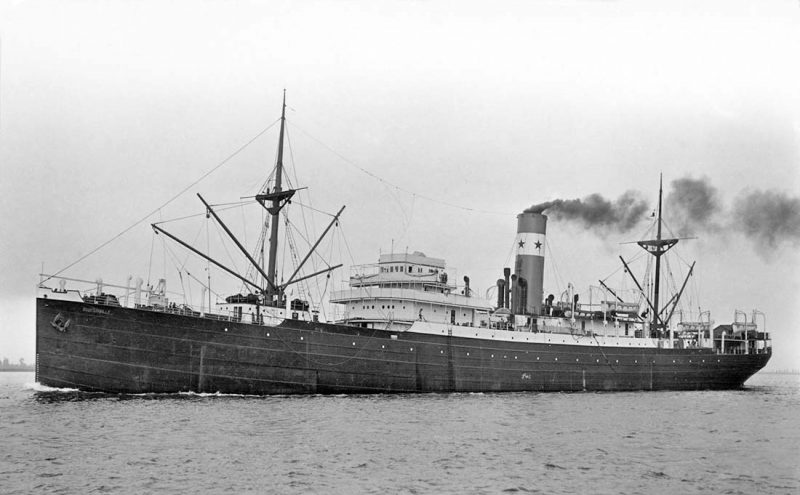
The Head Office of the company was built in Paris in some style at tree lined Boulevard Malesherbes, built between 1853 and 1870 by Baron Haussman and inaugurated by Napoleon III in 1863. Occasional voyages were made in the last decade of the nineteenth century to Indo China and the Far East. The Banque de l’Indochine, with branches in Hanoi, Haiphong and Kouang in Indo China, functioned as a colonial bank to help the French Government, and commercial companies such as Chargeurs Reunis, manage their colonial territories and businesses in Indo China. The bank built a stylish branch on the Bund in Shanghai in 1910 in the ‘French Renaissance’ style. Jules Vignal and Henri Fould had taken advantage in 1881 of a law that offered substantial Government subsidies to French shipowners and shipbuilders, and they had expanded the fleet to 26 steamers with regular services to Canada, New Orleans and the Gulf of Mexico, the West Coast of Africa, and to South Africa and Madagascar by the end of the century.
A new regular service was begun in 1901 from Dunkirk to Saigon and Haiphong, which was expanded into a Round the World service four years later. The new steamer Amiral Duperre of 5,037 grt opened the service, with Amiral Jaurequiberry of 1902 inaugurating a Round the World service in 1905. Steamers sailed from Saigon to load in China and Japan, then sailed across the Pacific to Hawaii, San Francisco, Los Angeles, San Diego, and Mexican ports, and down to Punta Arenas in Chile, Montevideo and home to French ports.
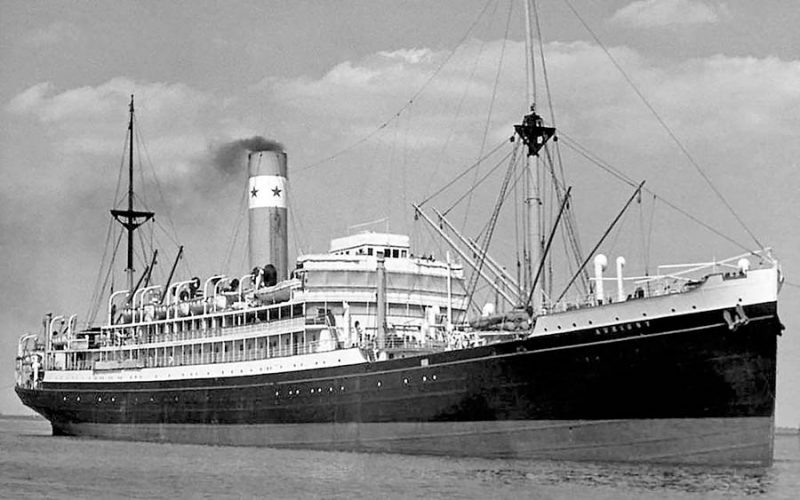
The new steamers Amiral Exelmans, Amiral Fourichon, Amiral Gueydon, Amiral Magon, and Amiral Duperre of 5,100 grt loaded cargoes of tea, porcelain, paper, marble, sulphur, peanuts, bran and beer in the Far East. Amiral Geuydon caught fire and exploded in 1903 in the Red Sea, and was towed back to Marseille and broken up in 1904. Amiral Duperre took three months to steam from Le Havre to Yokohama towards the end of 1911, but only twenty days to steam across the Pacific to San Francisco. This was the last sailing of the Round the World service as it had become unprofitable. The long awaited Panama Canal, opened in August 1914, would have probably saved the service.
Larger twin screw steamers were used from 1901 on the Indo China service, such as Europe, Afrique and Asie of up to 8,500 grt, and the four units of the ‘Island’ class of Ceylan, Malte, Corse and Ouessant of 8,500 grt, and the four units of the ‘Explorer’ class of Ango, Bougainville, Champlain and Dupleix of between 7,500 and 8,500 grt. The twin screw Ansie of 8,561 grt completed in 1914 was twin funnelled, as was Camranh of 11,700 grt completed in 1923, but the latter ship was converted into a motorship in 1927 with eight cylinder Sulzer diesel engines and renamed Brazza for the West African service. The fleet numbered 31 steamers at the start of World War I, but lost eight ships to enemy action during the war. The majority of the fleet were requisitioned for use as troopships and hospital ships, and refrigerated capacity was built into the steamers Malte, Ceylan and Ouessant. War reparations from Germany restored the fleet to thirty ships by 1920. The German reparations vessel Altenburg became the first Camranh of 6,472 grt in 1919, but she was wrecked in the Straits of Malacca a year later.
The company was operating three services in 1920, the Indo China Line, the South America Line, and the West Africa Line. The Head Office remained in Boulevard Malesherbes in Paris, with Monsieur Perouse as Chairman and Monsieur Fould as Vice Chairman. The worst marine loss in the annals of the company occurred in 1920, when Afrique of 5,404 grt and completed in 1907, encountered a storm in the Bay of Biscay and sank with the loss of 556 lives. War replacement vessels included eight British standard ‘A’ and ’B’ types, and a big programme of twenty passenger and cargo vessels completed between 1919 and 1923. This featured an ‘Island’ quartet of Belle Isle, Aurigny, Formose and Lipari of around 10,000 grt, plus a quintet of turbine powered ships for the South American service that were converted in 1925 to carry passengers on the Indo China route with ‘Cap’ prefixes to their names. Cap Lay ex Halgan was wrecked in a typhoon in 1928 in Halong Bay in northern Indo China, but in her short career she had begun company cruising with a cruise in 1927 from Bordeaux to Lisbon, Tangier, Algiers and other Mediterranean ports. The company produced cruising posters in 1932, and cruising continued during the Depression as rich French citizens escaped the worst effects of the trade havoc at home.
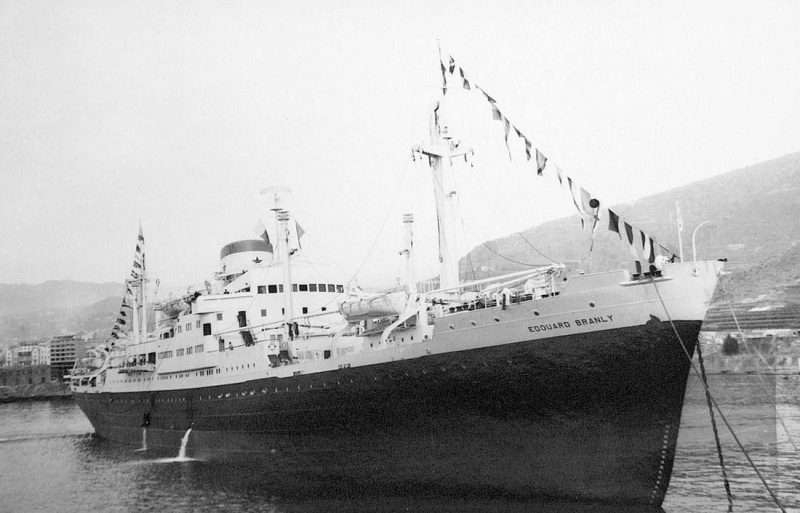
The Fabre family led by Cyprien Fabre purchased the company in 1927, and six years later it was operating a big fleet of 44 steamers plus the big motorship Brazza with accommodation for 363 passengers. Cyprien Fabre diversified the company into the fledgling air industry, founding Aeromaritime in 1933, which was expanded in the early post-war years in 1948 with services to Indo China as Union Aeromaritime de Transport (UAT). This became on 1st October 1963 the largest private French airline with services to Vietnam, Indonesia, Malaysia and Singapore as Union des Transports Aerienne (UTA), with 62.5% of the shares held by Chargeurs Reunis. The shipping company had become independent of the Fabre family in 1937, but Francis Fabre repurchased their shares ten years later in 1947.
The Chargeurs Reunis fleet consisted of 42 passenger and cargo-liners and cargo ships on the outbreak of war on 3rd September 1939. A further two liners were managed for Compagnie Sud Atlantique on the South American service in Massalia of 15,363 grt, and the new Pasteur of 29,538 grt with accommodation for 2,122 passengers and easily identifiable by her huge single funnel. Pasteur was ready at the Penhoet yard on the outbreak of war, but her maiden voyage to South America from Bordeaux was cancelled, and she became an Allied troop transport during the war. She did not return to South American service at the end of the war, instead she ran as a troopship for the French Government to Indo China. Massalia was seized by the Germans at Marseille on 21st August 1941 and was scuttled to block the harbour entrance at Estaque on 22nd August 1944. Chargeurs Reunis war losses were heavy at 28 ships, with several sunk in the Far East after being taken over by the Japanese in Indo China. There were only fifteen survivors left afloat at the end of the war, and the shattered fleet was immediately replaced by fifteen ‘Liberty’ types, two ‘Empire’ and one ‘Park’ war standard types.
The Chargeurs Reunis and Compagnie Sud Atlantique post-war liner replacement programme in the early 1950s consisted of eight similar ships of 11,400 grt with accommodation for 90 First Class passengers, 52 Second Class passenger, and 320 in Third Class, although the trio of ships on the Indo China service had their Third Class berths replaced by four hundred berths for troops. Clement Ader, Edouard Branly and Henri Poincare ran to Indo China from Bordeaux, while Lavoisier, Claude Bernard, Louis Lumiere, Laennec and Charles Tellier ran to South America.
The Indo China trio were doomed by the independence struggle in the French colony, and after the decisive battle of Dien Bien Phu in 1954, their French careers were cut short and they were sold in October 1956 to Italia Line and renamed as Alessandro Volta, Antonio Pacinotti and Galileo Ferraris. They were twin screw liners with service speeds of sixteen knots from twin two stroke single acting Sulzer diesels of 11,200 bhp, and had been built with refrigerated capacity for the Indo China service. The liners Claude Bernard and Lavoisier were sold to East German and Italian owners respectively in 1962, while two Tyne built liners completed in 1952 for the West African trade, Brazza and Foucauld, with accommodation for 242 passengers, were sold off to the French Navy.
Chargeurs Reunis and Compagnie Sud Atlantique withdrew from the South American service in the Autumn of 1962, thus ending passenger carrying for both companies. The liners Laennec, Charles Tellier and Louis Lumiere were transferred to Messageries Maritimes, and remained on the South American service, until sold in 1967 to Far Eastern Abeto Line and were then employed on the Indonesia to Mecca pilgrim trade.
In April 1965, the West African reefer and cargo liner services of Fraissinet & Fabre, which had been combined in 1957, were taken over by the company. The newly combined operation was immediately merged with Paquet Line, founded by Nicolas Paquet in 1863. The resulting ensemble was then renamed Nouvelle Compagnie de Paquebots (NCP), and the passenger ships to West Africa wore black funnels with ‘CNP’ on a red central disc.
Chargeurs Reunis remained in shipping with cargo only services and their ‘B’, ‘K’, ‘L’, and ‘T’ classes, as well as multi-purpose ships and container ships from 1972/73. In October 1986, an attempt to purchase the company by CGM French Line came to nothing as the French Government had a privatisation agenda at the time, and the move was seen as a form of nationalisation. The company was sold in January 1988 to Delmas Vieljeux, with the purchaser later taken over in September 2005 by CMA CGM French Line, a direct descendant of Messageries Maritimes.
Postscript
The Chargeurs Reunis company has remained in business under the simpler style of ‘Chargeurs’, and today is an industrial group with 1,800 employees, and manufacturing interests in protective film and surface techniques, technical interlined textiles, top woven and combed wool manufacturing and other industrial products and processes. Turnover in 2012 was €525 million with 94% of revenue generated outside of France.
Messageries Maritimes merged with Compagnie Generale Transatlantique (French Line) in 1977 to form CGM, which later in 1999 merged with CMA to form CMA CGM, the third largest container line in the world. Giant CMA CGM container ships today serve from French and North European ports to Chinese and Far Eastern ports in the same cargo services that Messageries Maritimes had pioneered over 150 years ago.
The State of Viet Nam established its own Viet Nam Ocean Shipping Agency in 1957, and today is a member of the Vinalines Group of Viet Nam, which also includes the Viet Nam Ocean Shipping Joint Stock Company (VOSCO), established on the 1st July 1970 and today has a fleet of 130 vessels of 2.85 million dwt. Ferry services run today for tourists to Halong Bay in the North of Vietnam with over 1,600 islands and tall islets jutting from the sea in jagged ‘karst’ formations, and also to the island of Phu Quoc to the south of the mighty Mekong river.





Comments
Sorry, comments are closed for this item